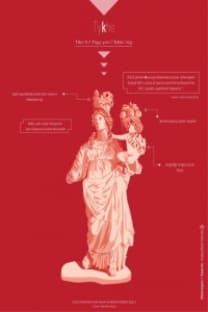Yıkıcı Süreçlerin Gustav Metzger’in Sanatındaki Yansımaları Üzerine
Gustav Metzger, Kendi Kendini Yok Eden Sanat, Aktivizm, İmha, Geçicilik
ON THE REFLECTIONS OF THE DESTRUCTIVE PROCESSES IN THE ART OF GUSTAV METZGER
___
- Fisher, J. (1974). Destruction as a Mode of Creation, The Journal of Aesthetic Education, 8 (2), 57-64. Doi: 10.2307/3332132
- Lifton, J. R. (1987). The Future of Immortality and Other Essays for Nuclear Age. New York: Basic Books.
- Marinetti, T. (2016). Fütürizmin Temeli ve Manifestosu. P. Wood ve C. Harrison (Ed.)
- Sanat ve Kuram: 1900-2000 Değişen Fikirler Antolojisi içinde (s.171-175). İstanbul: Küre.
- Metzger, G. (1996 ). Damaged Nature: Auto Destructive Art. London: Coracle.
- Stiles, K. (1987). Synopsis of the Destruction in Art Symposium (DIAS) and Its
- Theoretical Significance. The Act, 1(2), 22. Stiles, K. (1992). Survival Ethos and Destruction Art. Journal For Theoretical Studies in Media and Culture,14 (2), 74-102.
- Stiles, K. (1999). Thresholds of Control: Destruction Art and Terminal Culture.
- Timothy Druckrey (Ed.), Ars Electronica: Facing the Future: A Survey of Two Decades içinde. Cambridge: MIT. Stiles, K. (2005). The Story of the Destruction in Art Symposium and the DIAS Affect.
- Sabine Breitwieser (Ed.), In Gustav Metzger: Geschichte Geschichte içinde (s. 41- 65 ). Vienna: Generali Foundation. Stiles, K., Selz, P. (1996). Theories and Documents of Contemporary Art: A
- Sourcebook of Artist Writing (second edition). Los Angeles: University of California. Tzara, T. (2016). Dada Manifestosu 1918. Wood P, Harrison C. (Ed.), Sanat ve Kuram: 2000 Değişen Fikirler Antolojisi içinde (s. 283-288). İstanbul: Küre.
- Virilio, P. (1983). Pure War. New York: Semiotext.
- Wilson, A. (2008). Gustav Metzger’s Auto Destructive/Auto Creative Art: An Art of
- Manifesto 1959- 1969. Third Text, 22 (2), 177-194.
- Görsel -İşitsel Kaynaklar Resim 1. Gustav, Metzger, Asit Resim, 1961, yerleştirme, (Error Hyperlink reference not valid. Adresi: https: //www.tate.org.uk/art/images/work/T/T12/T12156_10.jpg
- Resim 2. Gustav Metzger, Mobil, 2015, yerleştirme, (http://www.artcop21.com). Erişim
- Adresi: http://www.artcop21.com/wp-content/uploads/2015/10/Mexico-City-July-2015- 1140 x 670.jpg
- Resim 3.Yoko Ono, Parça Kes, 1964, performans, (Error Hyperlink reference not valid. Adresi: http://www.moma.org/learn/moma_learning/_assets/www.moma.org/wp/ moma_learning/wp-content/uploads/2017/03/ono_cutpiece-317x395.jpg
- Başlangıç: 2016
- Yayıncı: Düzce Üniversitesi
Özgün Baskı Resim Sanatı Üzerine Bir Araştırma
Zeynep GÜRLER, E. Yıldız DOYRAN, Burhan YILMAZ
Yerel Üretim ve Turizm İlişkisinde Tasarım Müdahaleleri Üzerine; Safranbolu Örneğine Doğru
Yıkıcı Süreçlerin Gustav Metzger’in Sanatındaki Yansımaları Üzerine
